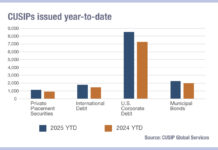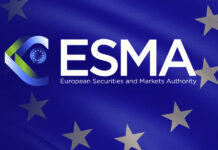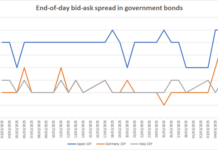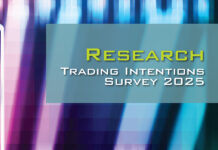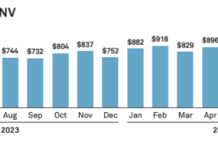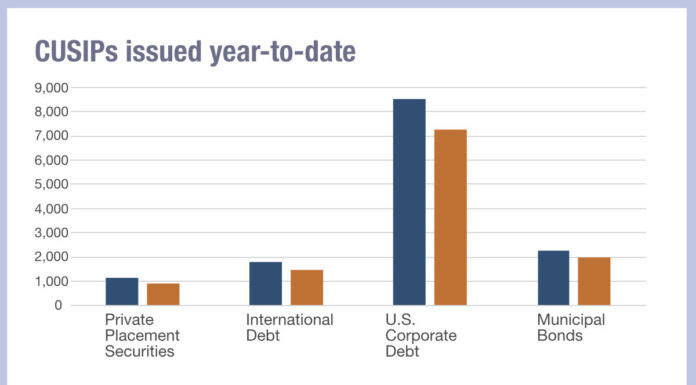Expectations of volatility jump as traders across the market seek liquidity and cost management through single dealer platforms.
J.P Morgan’s annual E-trading Edit, a comprehensive survey of over 4,200 institutional traders, has found a sharp rise in expectations of market volatility in 2025, up to 41% from 28% in 2024, with over half of the respondents (51%) citing inflation and tariffs as the macro factors most likely to impact markets.
With geopolitical tensions and US/China relations also in scope to deliver a bumpy year, trading desks unanimously plan to increase electronic trading, and balance that across both single-dealer and multi-dealer platforms. For the users of single dealer platforms their stated goals are to reduce execution brokerage costs, increase access to liquidity/inventory and deliver on a multi-asset product offering.
The DESK spoke with Scott Wacker, global head of e-Commerce sales and marketing, and Patrick Whelan, head of FICC digital markets at J.P. Morgan, to further analyse this year’s survey responses.
The DESK: Survey participants are most concerned about market volatility and liquidity access. How do you see those playing out this year?
-

Patrick Whelan
Patrick Whelan (PW): In volatile markets, our clients need stability and trust. We’re focused on providing consistent support and innovative solutions that help them navigate uncertainty. This includes leveraging technology to enhance our trading platforms and ensuring seamless access to liquidity. From a fixed income perspective, particularly in credit and EM Rates trading, the market has experienced substantial growth in electronification over the last couple of years, and we expect that pace to continue. We anticipate that the evolving market conditions will continue to present both challenges and opportunities globally. -

Scott Wacker
Scott Wacker (SW): It is not surprising that traders are concerned about liquidity in volatile periods. It is in volatile periods that the marginal market makers tend to become more defensive and liquidity dries up, just when the opportunities are most attractive. This is why direct connectivity between traders and their key liquidity providers or other liquidity sources is growing in importance. This form of connectivity engenders a bilateral relationship but via an efficient electronic channel which can deliver bespoke axes, algos, data and analytics, is auditable, and thus highly supportive of digital partnerships.
The DESK: There are several big macro concerns which traders cite as having the greatest impact in the market. How can they prepare to manage those?
- PW: There is a lot of uncertainty. The optimism is there, but the reality of what drives volatility and how liquidity provision could be affected in different areas will be interesting to see. As global economic conditions evolve, it’s noteworthy that inflation and tariffs are at the forefront of concerns. While this aligns with the current climate, it underscores persistent worries about cost pressures and trade policies. The significant drop in recession risk concerns, from 18% to 7%, is somewhat unexpected, yet it may indicate increasing confidence in economic recovery.
- SW: 2024 was a very hectic year both on the geopolitical side, but also on the monetary and economic side. Global conflicts, new governments, stubborn inflation, growth dislocations will all lead to an interesting year in 2025. The best way to prepare for this is to ensure that trading relationships are robust, that there are no misunderstandings that need to be resolved, that electronic channels are operational, and that lines / limits are in place. Essentially, make sure your house is in order before the markets move or dislocate because once they do, it will be too late.
The DESK: How is the cost of liquidity reflected in the results on market structure, including single and multi-dealer platforms?
- SW: It is important to understand what an intermediary offers and what one is paying for the role that it plays. One size should not fit all. For instance, if a trader is sourcing liquidity in extremely difficult to trade product, an intermediary or broker might be an important tool. However, in more liquid products, this intermediary role is potentially less important and might lead to less desirable outcomes given information leakage, mark–out and execution costs. In this case, a single dealer or a direct API is likely superior. While a bit more involved to set up, a hybrid approach to markets with proper transaction cost analysis is the best way to appropriately measure and optimize liquidity vs. execution cost.
- PW: As traders have become more vocal on the brokerage cost issue, platforms have started to compete for flow more aggressively. As an industry, we must continue to increase competition and support new entrants, expand the tools available to clients, enhance liquidity provision, and standardize the available protocols. Without these efforts, we won’t fully realize the benefits that healthy competition can bring.
The DESK: What do you make of the criteria deemed ‘most important’ when selecting a single dealer platform?
- PW: When selecting a single dealer platform, ‘Reduced execution/brokerage costs’ remains the top priority, with 29% of respondents emphasizing its importance, particularly in Credit (31%) and FX (29%). The findings also indicate that if the platform is intuitive and user-friendly, facilitating easy navigation, access, and onboarding, traders are more inclined to adopt it. In areas like rates and credit, where hedging spread-based products is essential, and in ETFs, which are inherently cross-asset, we believe that user-friendly tools with differentiated content and the ability to package up execution across products, coupled with improved access to liquidity provision, will be increasingly appealing.
The DESK: How are you seeing specific technologies support traders?
- SW: AI is still nascent but the level of experimentation we’re seeing in the market underlines significant application in the near future as the technology matures. It is hard to say how things will progress, but it is clear that markets will continue to go through unprecedented technological change and that data will be a key component. Closer to the presence, the most significant technology that continues to build momentum is the use of APIs.
- PW: Over 67% of respondents, up from 53% in 2023, ranked AI and machine learning techniques as the technology expected to be most influential for trading in the next three years, spanning all asset classes and regions. At J.P. Morgan, we are aligned with this belief and are investing heavily in these areas to enhance our analytics capabilities and automate processes, ultimately benefiting our clients by providing more accurate insights and efficient trading experiences. ‘Real-time data and analytics’ consistently emerge as one of the most valued features across all product categories and regions, underscoring their critical importance to traders. Access to APIs and the ability to aggregate data in clients’ E/OMS discussions have also become increasingly necessary in certain product areas. As more pools of liquidity become available, traders need to access them efficiently. While direct connectivity can reduce some execution costs, clients are also evaluating the investment in technology required to access this liquidity effectively.
The DESK: Why do you think ETFs and corporate bonds are expected to see the greatest advances in electronic trading?
- PW: Despite relatively straightforward access to ETFs for retail and wealth management, we see a lot of room for growth over time as more clients become comfortable with trading these products as part of package solutions. Additionally, this year’s survey once again suggests that the growth in e-trading is likely to be most keenly felt in areas such as EM Rates and Credit Corporate Bonds. In 2024, over 48% of U.S. investment-grade (IG) bonds were traded electronically, driven by the evolving mix of protocols across the credit market. Electronic portfolio trading (e-PT) was particularly notable, with over 10% of U.S. IG and 8% of high-yield (HY) volumes being traded via PT protocols. It will be interesting to see how these numbers evolve by 2026.
jpmorgan.com
©Markets Media Europe 2025

